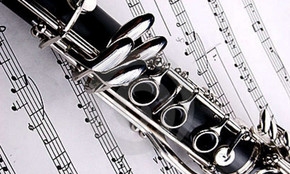Well liked by children and adults, the clarinet and other woodwind instruments are easy to learn and can be happily played throughout one’s life. It’s a great talent to have and can be enjoyed by family and friends alike.
Woodwind Instruments
This category consists of several of the most popular instruments played. Instrument’s like the flute, oboe, clarinet, saxophone, bagpipes and recorders. There are two types of wind instruments. Two main types are flutes and reed instruments, otherwise called reed pipes. What separates these instruments from others, is the way in which they produce their sound.
Compared to the oboe’s double thin reed, the clarinet has a wider mouth piece, a single reed, a flaring bell, and a cylindrical bore with a length the same diameter except for the bell. It is flexible and produces different sounds in the high, medium and low registers, more so than other wind instruments.
Many Types of Clarinets
Clarinets are of differing sizes and pitches and comprise the largest woodwind family of instruments. The most common is the soprano clarinet, which has a range of almost four octaves. Most companies make them in colors, so that youth can enjoy the music with a little bit of flare.
The Clarinet’s History
Johann Christoph Denner of Leipzig, Germany was born in 1655. A successful instrument manufacturer, Denner improved game whistles and hunting horns and eventually produced the clarinet somewhere between 1690 and 1700. With the help of his son Jacob, Johann improved the chalumeau, a simple shepherd’s instrument, which had a range of only one octave and was the first single reed instrument. They added two keys, increased the range by more than two octaves, created a better mouthpiece, and improved the bell. In 1843, Klose further improved the clarinet by adapting the French Boehm flute key system.
Who Has Played the Clarinet?
Since approximately 1800, in the days of Beethoven, Mozart and Weber, the clarinet was established in symphonic music. Mozart was the first composer to use the clarinet in a symphony. Glenn Miller, born March 1, 1904, was very active with his orchestra from 1923 until December 15, 1944, when entertaining U.S. troops in France during World War II, his aircraft disappeared in bad weather over the English Channel. Others include Artie Shaw, Julian Bliss and Sabine Meyer.
Types of Ensembles That Employ Clarinet Players
A classical symphony orchestra has at least two to five clarinetists, which seldom change, so it is difficult for a young player to join one.
Harmonic orchestras, or symphonic wind bands, do not have a string section; however, the clarinet section has up to 30 players so can be an ideal starting point.
Military bands, fire brigade bands, community bands, and especially a school’s marching band with up to perhaps 100 players are popular places to get your foot in the door. The clarinet is also used in big bands, jazz and other commercial music as well as in Persian, Turkish, Indian, Persian, Gipsy and Turkish music.
The clarinet is popular with children because of its size, being easy to carry, and the opportunity to start playing in the school band.

